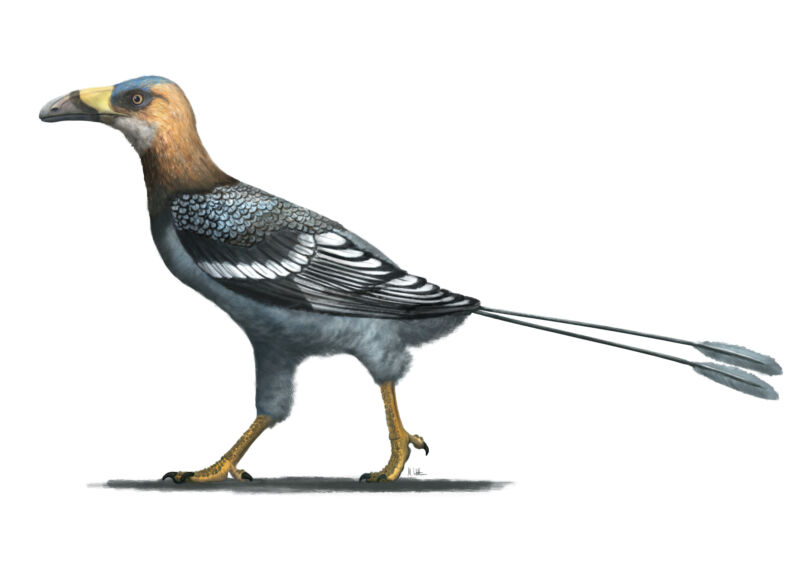Cretaceous birds were thought to have small bills—except this one

Enlarge / Artist's depiction of Falcatakely forsterae. (credit: Mark Witton)
Given the unusual attention granted to turkeys this week, let's talk dinosaurs. Today's birds are, of course, descendants of the only branch of the dino tree that made it through the end-Cretaceous mass extinction. In the dinosaurs' halcyon days, the early birds were a bit different, still retaining teeth and foreclaws among some subtler anatomical differences with their modern descendant. A new fossil find reveals an unexpected bird from that time-one with a whopping, great toucan-like beak.
The fossil, named Falcatakely forsterae, comes from late Cretaceous rocks in Madagascar. Many of the early bird fossils we've discovered so far come from older, early-Cretaceous rocks in China, with the timeframe between then and the end-Cretaceous extinction more of a question mark. The new fossil is a nicely preserved head of a crow-sized bird with a strikingly long, tall and narrow beak.
The early Chinese bird fossils don't show much diversity in beak shape. That's a big contrast with modern birds, which have a wild variety of beak shapes befitting their many different ecological niches. Pelicans, woodpeckers, and parrots have very different diets that require a beak adapted to the job. It had been thought that enlarged beaks may not have been possible until some anatomical shifting in the parts of the skull took place, meaning that the early birds were simply limited. But the new find shows that wasn't entirely true. This species could have inhabited an ecological niche that was empty after the extinction-until a more modern bird drifted back into it much later.
Read 5 remaining paragraphs | Comments